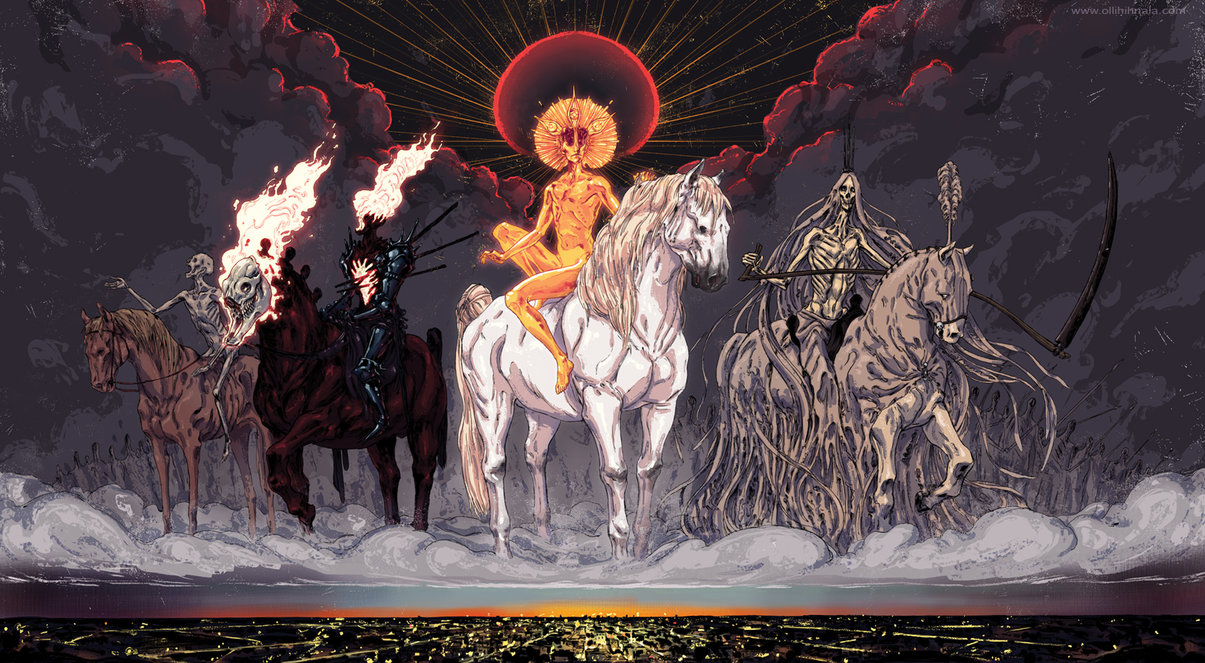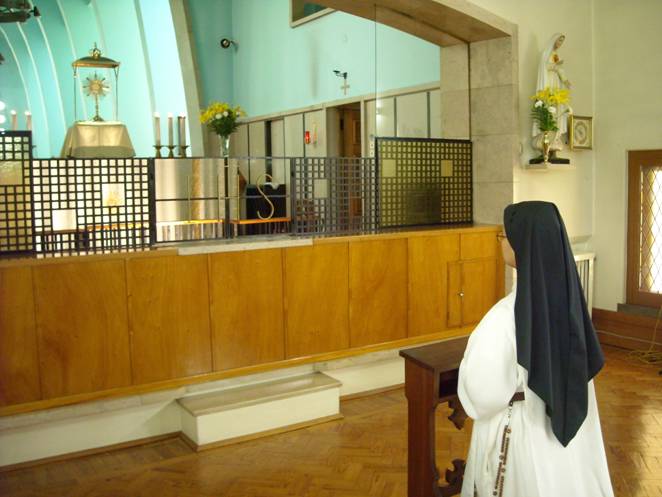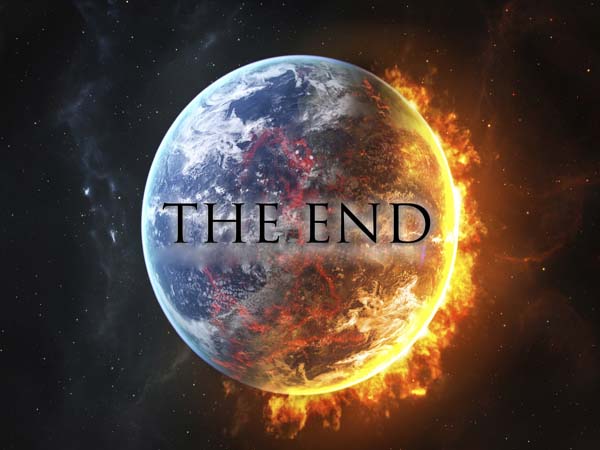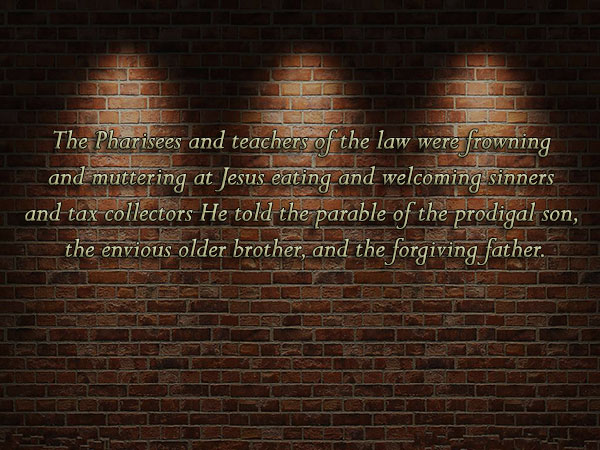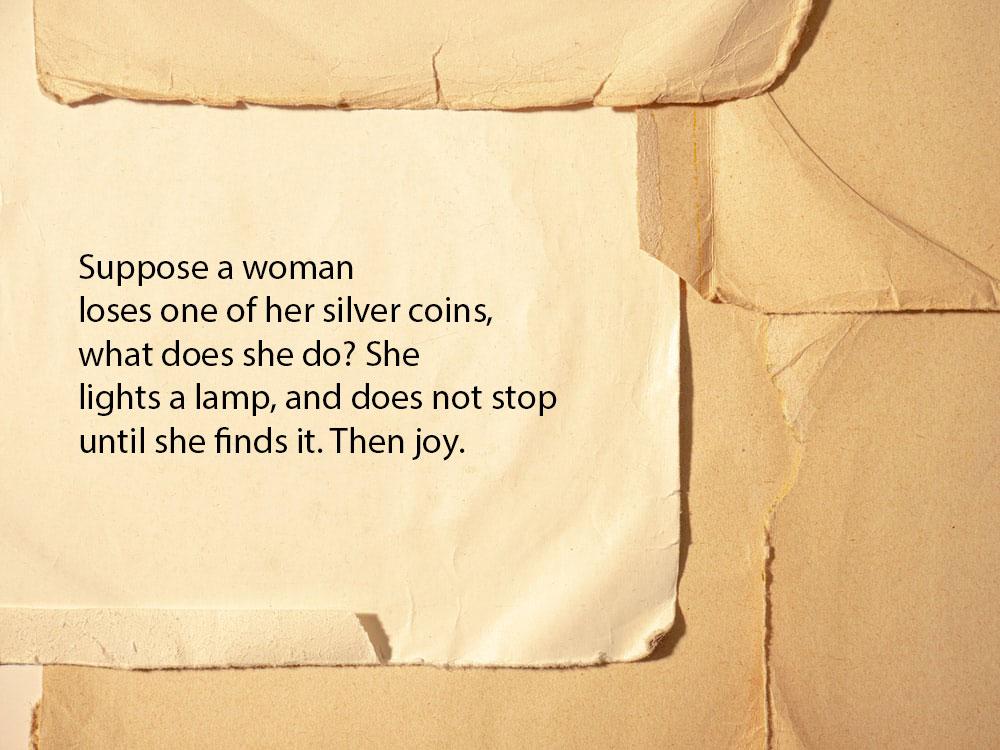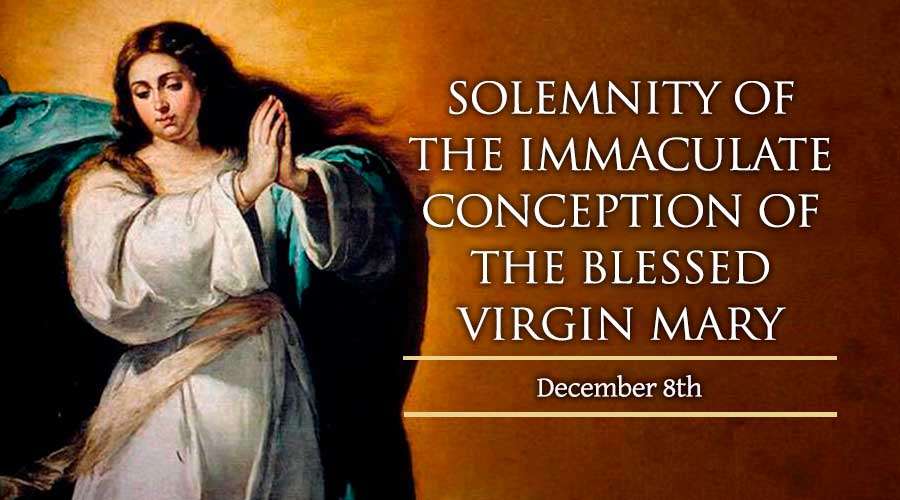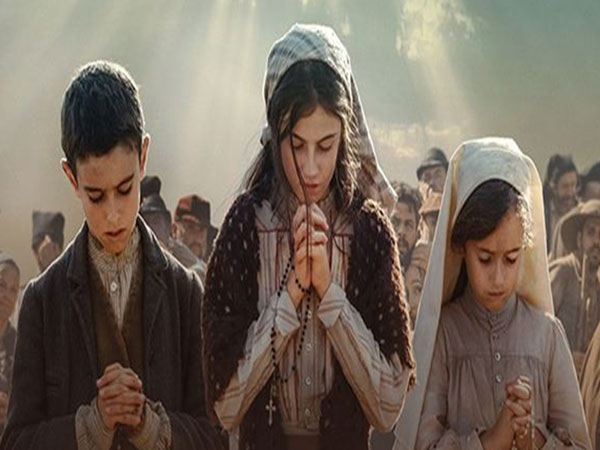The mysterious book
About 19 centuries past, a prisoner on the island of Patmos, fell into ecstasy and had strange visions. His name was John and all of his visions are compiled in the book of the Apocalypse or Revelation now found at the end of our Bibles.
Revelation relates that on the day of his visions John contemplated an open door in heaven and he heard a loud voice that invited him to come up for him to see all that was to happen (Rev 4:1). There he was able to see God seated on the throne, with a scroll in his hands (at that time the books do not appear as they do today, but were written in scrolls), sealed with seven seals.
He was dumbfounded. What would the book contain? Why such mystery? Can the seals be opened? Before his eyes he saw how one by one the seals were broken, and as the seals were broken he contemplated on the secrets they revealed.
The four horse riders
What did that man see, prisoner as he was on the Roman island jail, prisoner for defending the faith in Christ? He tells it with mysterious images and enigmatic symbols proper to apocalyptic genre. Hence, the difficulty to interpret them! But if we look carefully, we see that it is possible to discover what he wanted to tell us with that vision. What matters to us here is the opening of the first 4 seals. Here John saw four riders with horrifying characteristics. These are the 4 famous riders of Revelation (Jn 6:1-8). Since the beginning all Biblicists, exegetes, commentators and simple readers try to decipher this enigma with the most varied explanations.
Most of them agreed that the four riders represent horrendous misfortunes that would come upon humanity. But what kind of misfortune. When these happen? Who will suffer them? About these there is no consensus.
Different Opinions
Many people hold that the first horse rider, with a bow in his hands, announced the drama of the First World War; and the other three were plaque, hunger, and death, the consequences brought forth by the first. Others hold that this vision refers to a third World War that is about to come which will also provoke famine and infirmities. There are also those who believe that the four horse riders symbolize the cataclysms of the end times.
But is there any truth to all these? Before we answer, we need to have in mind that no one can interpret Revelation as one likes. It is not a chaotic book, wherein one can get its interpretation in any way one desires. If the author conceals his message through figures and symbols, he also left us the key to discover his message. We then have to ask him for the explanation.
The first horse rider
Let us now read Revelation. The one who opens the four seals is Jesus Christ, under the image of a lamb: “Now I saw when the Lamb opened one of the seven seals, and I heard one of the four living creatures say, as with a voice of thunder, ‘Come!’ And I saw, and behold, a white horse, and its rider had a bow; and a crown was given to him, and he went out conquering and to conquer” (Rev 6:1-2).
Who is this strange horse rider who appeared first? We have already anticipated the answer: it is the same Jesus Christ. How can we discover such? Through the characteristics given by the author!
It is said that he appeared after the loud cry: “Come!” And this is the prayer that the early Christians uttered everyday. They pray for the prompt coming of Jesus Christ, as we read in Revelation: “the Spirit and the bride say, “Come.” And let him who hears say, “Come.” (Rev 22:17). Further, they ask, “Come, Lord Jesus” (Rev 22:20). Thus, the one who is called by the summons “Come” cannot be any other than Jesus Christ.
Further, the verb “to come” in Revelation applies only to Jesus Christ. He is given the title, “the one who Comes,” and they repeatedly say that he “comes soon” (Rev 1:4, 7, 8; 2:5, 16; 3:11; 4:8; 16:15; 22:7, 11). Thus, the imperative “Come” serves as the key for our discovery.
Symbolic Color
But there are other details that can help us. This first horse rider comes mounted on a white horse.
What does the color white signify in Revelation? If we make an analysis, we see that it is only used for the things that are in relation to God, things proper to God. For example, the twenty-four elders in heaven who were dressed in white (Rev 4:4). In the armies of heaven, who were dressed in white (Rev 19:14). In all those who were saved, as they were each given a white tunic (Rev 6:11; 7:9). The risen Jesus’ hair was white as wool (Rev 1:14) and he was seated on a white cloud (Rev 14:14). And it is said that the one who perseveres until the end will be given a white garment (Rev 3:4-5) and will be given a white stone with a new name written on the stone (Rev 2:17). God Himself also sits on a great white throne (Rev 20:11).
Thus, if the color white in Revelation always symbolizes the salvation, the victory, the final triumph and does not imply any destructive nor evil tendencies, then, the one who mounts on a white horse can only be someone who belongs to the divine.
The arc
Another key that can help us the rider is the bow. In the Old Testament, the bow and the arrow are characteristics of God, symbols of His judgment and His decisions.
We find an example in the book of Lamentations where it is said: “He has bent his bow, with his right hand steadying the arrow” (Lm 2:4). The Psalms also read: “and he sent out his arrows, and scattered them” (Ps 18:14). The poor Job cries out: “he set me up as his target, his archers surround me” (Job 16:12-13), “pelts him with his arrows” (Job 20:23), “the bronze bow strikes him down” (Job 20:24). And Ezekiel, prophesying against sinners announced: “I loose against you my deadly arrows of famine, arrows for destruction” (Ezk 5:14). The prophet Habakkuk also makes use of this symbol: “You bare and ready your bow and set upon it your arrow” (Hb 3:9).
The readers of Revelation that knew the Old Testament could easily identify this horse rider who is with a bow as someone who comes in the name of God.
The crown
The crown also, an exclusive characteristic of this horse rider, gives us a clue. It was proper to the kings and a sign of victory.
The 24 elders who are in heaven wore crowns of gold (Rev 4:4). And the resplendent Woman of the heavens, clothed with the sun and with the moon under her feet, as seen by John, was also crowned with stars (Rev 12:1). The Son of Man who judges from the heavens, also wore a crown (Rev 14:14).
Revelation also says that Christians who remain faithful until the end have a crown that no one can seize (Rev 3:11), for they are the kings in this world (Rev 1:6; 5:10), and they will reign for ever (Rev 22:5).
If in Revelation those who wear crowns are generally those persons in God’s side, then, the first horse rider must be someone from God.
The Conqueror
Finally, it is said that “he went out conquering and to conquer.” Who can this person be, who easily triumphs?
Again, Revelation gives us the solution: the verb “conquer” that appears 17 times in this book. It is always used to express the triumph of good over evil, the triumph of God over sin. Thus, Christians are said to be “conquerors” (Rev 2:7, 11, 17), that Christ is “conqueror” (Rev 3:21), that the Lion of Judah is a ‘conqueror” (Rev 5:5), and that the Lamb of God is “conqueror” (Rev 17:14).
Thus, this horse rider is given greater emphasis, then, by identifying him twice with the verb “to conquer”. It is unlikely that this horse rider represents the triumph of evil, of suffering, of pain and of the reign of sin.
The second apparition
There is still one argument left in order to identify the first horse rider. At about the end of the book, John in another vision, sees a similar person: “Then I saw heaven opened and behold a white horse.” He then reveals to us the identity of the one he saw: “He who sat upon it is called Faithful and True, and in righteousness he judges and makes war. His eyes are like a flame of fire, and on his head are many diadems; and he has a name inscribed which no one knows but himself. He is clad in a robe dipped in blood, and the name by which he is called is the Word of God” (Rev 19:11-13).
It is without doubt that we can recognize that the one referred to here is the Risen Christ.
It is unlikely that John makes use of the same figure and refers to different persons. The elements of one vision can serve to clarify the others. Thus, the horse rider of the white horse of chapter 19 has to be the same one referred to in Chapter 6, Jesus Christ Risen.
The other horse riders
As we have settled who the first horse rider is, it is now easy to analyze the other three; “When he opened the second seal, I heard the second living creature say, “Come!” And out came another horse, bright red; its rider was permitted to take peace from the earth, so that men should slay one another; and he was given a great sword” (Rev 6:3-4).
This second horse rider symbolizes, evidently, the war with all its painful effects. In Revelation, the color red signifies the effusion of blood, it talks of “taking peace,” of “slaying one another” and it mentions the sword which is synonymous to violence.
The narrative continues: “When he opened the third seal, I heard the third living creature say, ‘Come!’ And I saw, and behold, a black horse and its rider had a balance in his hand; and I heard what seemed to be a voice in the midst of the four living creatures saying, ‘A quart of wheat for a denarius, and three quarts of barley for a denarius’” (Rev 6:5-6).
All the bible scholars are in agreement that this black horse (symbol of death) represents the famine, the lack in terms of the availability of food, its misdistribution and the high price exacted for any supply.
Finally it concludes: “When he opened the fourth seal, I heard the voice of the fourth living creature say, ‘Come!’ and I saw and behold, a pale horse, and its rider’s name was Death, and Hades followed him” (Rev 6:7-8).
This is also easy to identify, the text explicitly says: it symbolizes Death. The “Hades” mentioned is hell.
The hidden message
What does John want to say with this vision, obvious to the readers of his epoch but strange and difficult for us?
In order to understand its message fully, we need to have in mind that according to Jewish belief, when the Messiah comes at the end of times, he will be accompanied by strange phenomena and catastrophes. And even if the details of such are not made clear, there has been a catalogue of disasters and calamities that will take place all over the world. All Jews are familiar with these catastrophes of the last days.
Even Jesus knew. Thus, when he pronounced his sermon about the end of the world he used this traditional catalogue and said that the coming of the Messiah is accompanied with wars (Mt 24:6), famine (Mt 24:7), and death (Mt 24:9). He also mentions two more signs: persecutions (Mt 24:16) and cosmic disturbances (Mt 24:29). In total, five cataclysms.
Lacking horses
The Revelation of John wants to tell us that the Messiah has come. It is Jesus Christ. Thus he sees how the whole of creation of the Old Testament cries out: Come! (the four living creatures in Revelation represent creation). And thus, Jesus comes mounted on a white horse (the first horse rider).
But John tries to announce something more. With the death and resurrection of Christ we have entered into the last days. His coming has inaugurated the end days. Thus, in opening the seals, he sees the symbolical coming of war (second horse rider), famine (third horse rider) and death (fourth horse rider), a phenomena that had to accompany his coming.
Where does John “get” such vision? It is based in one of Zechariah’s prophesies (Zec 1:8-15) in which he saw four horses of different colors with their riders, announcing the cataclysms of the end days. John then makes use of this in order to say that with the coming of Christ we see the fulfillment of the prophesy and the initiation of the end days.
Thus, with the coming of Christ mounted on the first horse, the author is then left with three horses as signs. And the cataclysms were five. Thus, so as not to drift away from Zechariah’s “vision” he added to the four horses another two seals. Thus, in opening the fifth seal he saw persecutions (Rev 6:9-11); and in opening the sixth the cosmic convulsions (Rev 6:12-14).
No Calamities
Therefore, John, in order to guarantee that Jesus Christ is the authentic and true Messiah, recounts that through his death and resurrection, the awaited cataclysms happened as narrated in the form of the 4 symbolic horse riders.
Thus, we are not to wait for any more calamities in the future. The four horse riders do not announce any future calamities. Revelation simply announces that Jesus Christ, the Messiah, has come, and that he is already with us, and the symbols confirm such a claim.
Not Forgetting the First
More than this message, Revelation also leads us to a beautiful reflection. Frequently we can confirm with our neighbor the pain that surround us. First of all: violence in all its dramatic and insidious forms, people who hate and hurt each other (as incited by the second horse rider).
Not only this. People no longer respect each other; they violate each other’s rights, they all commit different abuses against each other. And as a consequence, we hear the cry of famine and injustice (the action of the third horse rider).
And as though this were not enough, other calamities such as infirmities, plagues, lies and offenses pile up. They are the everyday big and small “deaths” (as the fourth seal).
It is true that the bitter and impressive number of ills increase wildly among us. The author of Revelation affirms this effectively with the image of the horses.
But when we lift up such sad confirmation, we cannot forget one important detail: in the midst of our historical condition, there is a white horse that came out first, a positive force, that as it came first, it can conquer and eliminate such ills.
Jesus Christ is a real force, a powerful “conqueror,” who will always be conquering. Thus, in the face of all the evils, no matter how great they are, we should not despair. Christ is present and active, riding beside us, accompanying us in our problems in and through history. And he has promised to be the “Conqueror.”
The world will always be in His hands.


